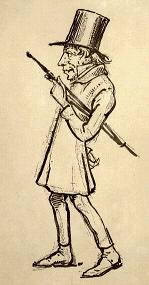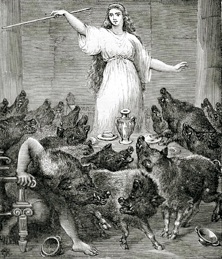 Despite Vampire movies having a classic connection to high school, the proper genre for school is no doubt the zombie movie. The great fear is of the great unwashed, not the stylized identity politics of adolescent lust. That excess we can work with. It is the unturnable relentlessness of nobody being home that is the proper work of schools.
Despite Vampire movies having a classic connection to high school, the proper genre for school is no doubt the zombie movie. The great fear is of the great unwashed, not the stylized identity politics of adolescent lust. That excess we can work with. It is the unturnable relentlessness of nobody being home that is the proper work of schools.
Vampires, everyone knows, are extra curricular.
The dilemma of Vampire movies is that they are always threatening to burst at the seams. Bodices, veins, emotions, blades, crosses, stakes, all dying to gush. But against passion we set infinity, cool ethics, stylized restraint, empty perspective. All about identity, nobody turns out to be anybody. Vanity cursed by never being able to see itself in the mirror. Vampire movies appear to run all hot and bothered, but show the stiff coldness at their heart. Which is why, despite the promise of virility and
prowess, they wind up, so easily being tedious. All you want in exchange is innocence? Virginity? Please. Aren’t we dying to give it away? Eternity is short compared to the endless hyperbolic drama of adolescence. Bite me already.
Let’s see those movements of infinity that, for Søren Kierkegaard, are the sign of the “knight of infinite resignation.” Smooth moves. The hunchback dreams of vampires.
The problem for the hunchback is that it is hard, while you are busy opening doors and ringing church bells for them, not to notice how silly vampires are. Penguin’s frustration with Batman is that he won’t take Penguin seriously as a peer when it is Batman that is being so absurd.
Isn’t part of what makes Nosferatu so disturbing that in him the figure of the hunchback and the vampire was not separated, as it is today?
So, how do we learn about vampires? Won’t this always remain extra-curricular?
The library never holds the appropriate text. One needs a crackpot mentor, disestablished. And one must understand old magic if only to beat it at its own game.
Do you want to maintain your humanity? Your love and passion for others? To just fit in? Then you must become unattractive and strange to those you want to love you, wear jewelry of garlic. Only when you don’t want it, can you have it. Such is coming of age.
It’s not exactly vampires, but for our text let’s take Horkheimer and Adorno on Odysseus’ run in with Circes. She seduces his men—clearly mass material, zombies perhaps, mere snuffling instinct—turning them into pigs.
But Odysseus, always finding the weakness to be exploited, discovers that by resisting Circes he wins her directly, and not just the illusory lure. The only trick is that his human form is kept at the cost of learning to suppress instinct. She turns out to now want what he no longer cares to give.
Horkeheimer and Adorno, often savvy to the notion that the paradox is not resolved by going further back, to a simpler time, nevertheless also often dream of it. For them this story marks a new trajectory:
In the transition from legend to history she makes a decisive contribution to the bourgeois chill. Her behavior puts into effect the ban on love which later became all the more powerful the more love as ideology was obliged to dissimulate the hatred between the competing partners. In the world of exchange the one who gives more is in the wrong; but the one who loves is always the one who loves more. While the lover’s sacrifice is glorified, the making of that sacrifice is jealously enforced. It is precisely in love itself that the lover is incriminated and punished. The inability to master himself and others demonstrated by his love is reason enough to deny him fulfillment. With society, loneliness reproduces itself on a wider scale. The mechanism operates even within the tenderest ramifications of feeling, and love itself, in order to have contact with another person at all, is forced to assume such coldness that it shatters at the moment of its realization.
This does little to help with the vacuousness of so many vampire movies. It seems almost essential. As Horkheimer and Adorno would have it, it is merely the logic of bourgeois love. And is there another?
Chan-wook Park’s movie Thirst, presents a master class on cinematic style for the adolescent pretenders. Thirst is based on Therese Raquin, an 1867 French novel by Emile Zola (remarkable for its lack of vampires). Here we find character emerging slowly out of the abyss, rather than the infinite shallowness of identity. Instead of showing us once more the coldness at the heart of heat, Park’s warms us to heat within coldness. Which is not to say that everything doesn’t go terribly. It is, after all Chan-wook Park. But things are turned on their head. It is the priest who becomes a vampire in his efforts to save others. He engages in a desperate bid for normalacy (and of course the woman) only to see his new household turned inside out. The new lair is not a moody dark, but redecorated with white paint and flourecent lighting, a glaring lost sun. And it is the humans that show that they will not stay dead, gleefully haunting their vampiric murderers.
And here perhaps is the challenge, for Adorno and Horkheimer, our crackpot vampire-hunter professors. Can we imagine the tortured bargains of love, not as the epitomy of love today—love gone wrong, shattered and lonely—but as the conditions for finding connection? Love loves an impossible test.
Is it our modern era’s difficulty that in this age of testing we know so little of tests?



“Isn’t part of what makes Nosferatu so disturbing that in him the figure of the hunchback and the vampire was not separated, as it is today?”
I watched that movie several years ago and I had not considered what made him seem so damn creepy to me. I thought it had something to do with his face or the black and white film…but I think you are right. It was something about the mix of two characters or categories or something…and otherwise pitiable creature (hunchback) who was also dangerous. Somehow the two identities diminish the former and multiply the latter.
As an aside, I was a huge fan of Buffy the Vampire at one point. A topic perhaps for later.
cheers! – Ryan